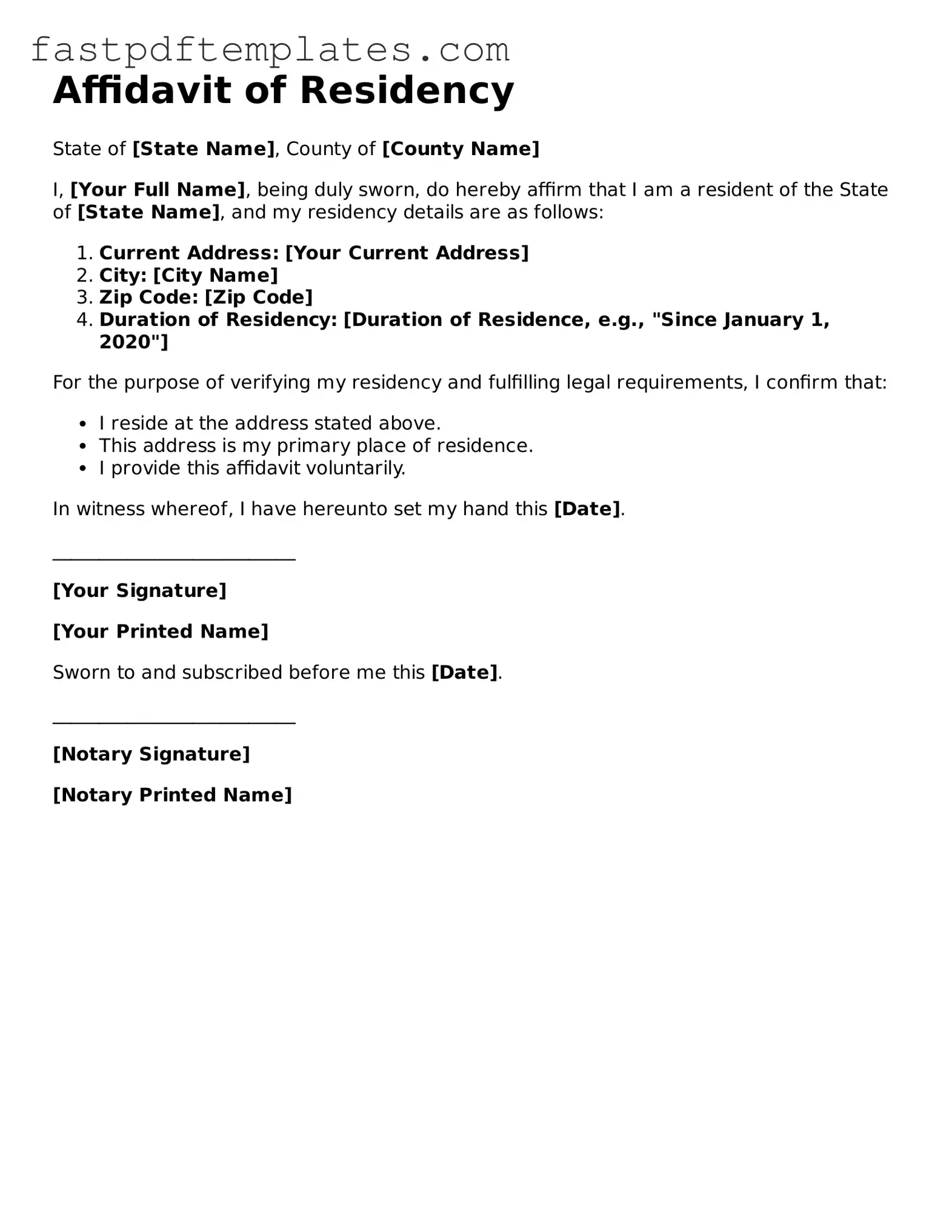The Affidavit of Residency form is similar to a Lease Agreement in that both documents serve to establish a person's residence at a specific location. A Lease Agreement is a legally binding contract between a landlord and tenant, outlining the terms of rental. Like the Affidavit, it provides evidence of where a person lives, but it also includes details such as rental payments and duration of tenancy. Both documents can be used to verify residency for various purposes, such as school enrollment or obtaining a driver's license.
Another document akin to the Affidavit of Residency is the Utility Bill. Utility bills, such as those from electric, water, or gas companies, often include the name and address of the account holder. This makes them a reliable source of proof of residence. While the Affidavit is a sworn statement, the utility bill is a transactional document. Both are frequently accepted by institutions needing to confirm an individual's address.
The Voter Registration Card also shares similarities with the Affidavit of Residency. When individuals register to vote, they must provide their residential address. This card serves as official proof of where a person resides and is often required for various civic duties. Both documents can be used to establish residency, but the Voter Registration Card carries additional implications regarding civic participation and rights.
In addition, a Government-Issued ID, such as a driver's license or state ID, is comparable to the Affidavit of Residency. These forms of identification typically display the holder's address, which helps verify their residency. While the Affidavit is a statement made under oath, the ID is an official document issued by a government agency. Both can be utilized to confirm where an individual lives, especially in legal or administrative contexts.
The Bank Statement is another document that resembles the Affidavit of Residency. Bank statements often include the account holder's name and address, making them a useful tool for proving residency. While the Affidavit is a declaration of where someone lives, the bank statement reflects financial transactions and account activity. Both documents can serve as acceptable proof of residency for various applications.
Similarly, the Tax Return can be compared to the Affidavit of Residency. Tax returns include personal information, including the taxpayer's address, which can help establish residency. Unlike the Affidavit, which is a sworn statement, the tax return is a financial document submitted to the government. However, both can be utilized to demonstrate an individual's residence, particularly in matters related to taxation or eligibility for certain benefits.
Lastly, the School Enrollment Form is akin to the Affidavit of Residency. When parents enroll their children in school, they often need to provide proof of residency, which can be established through the Affidavit. The School Enrollment Form typically asks for the address where the student resides. Both documents are crucial in ensuring that students are enrolled in the appropriate school district and are eligible for educational services.
